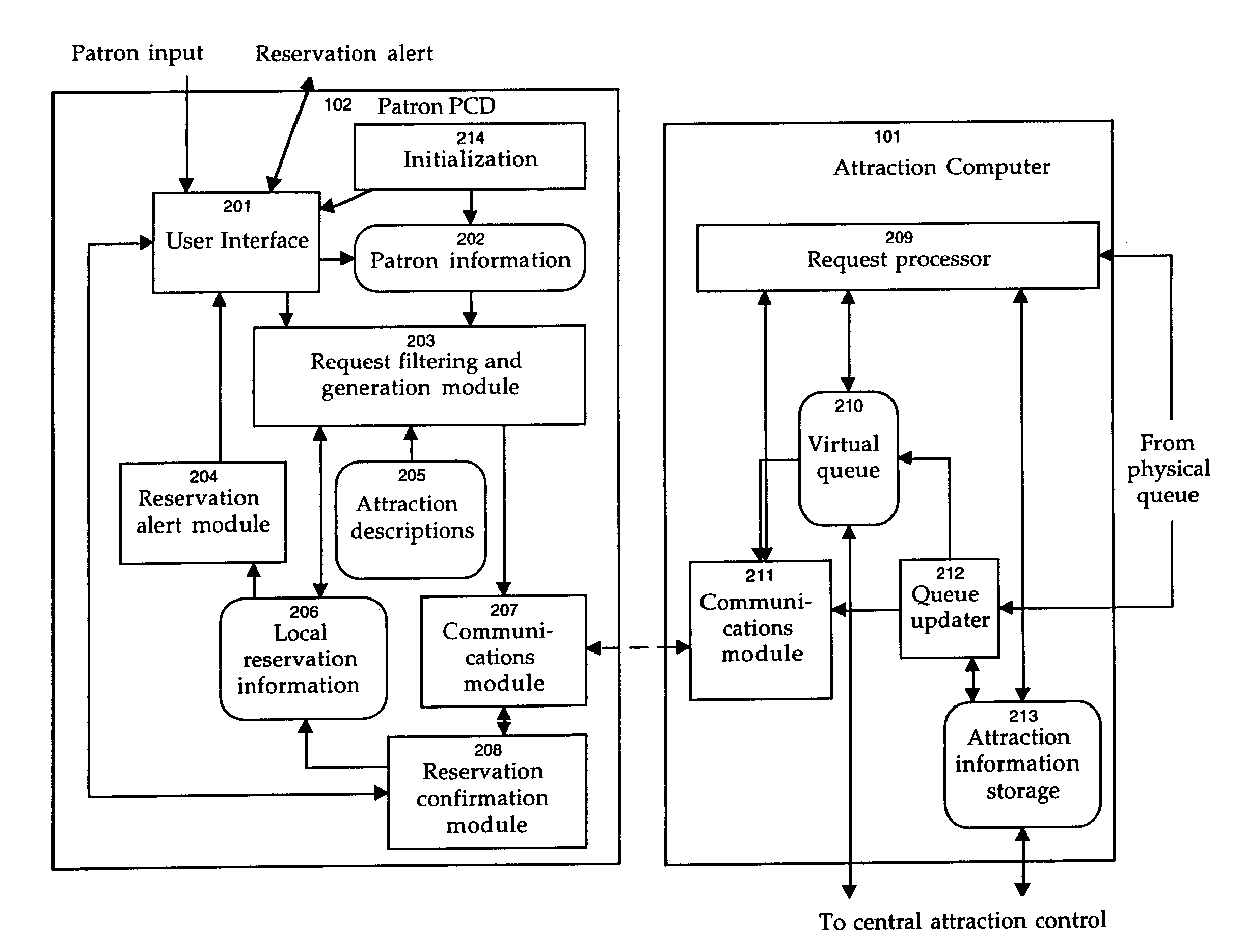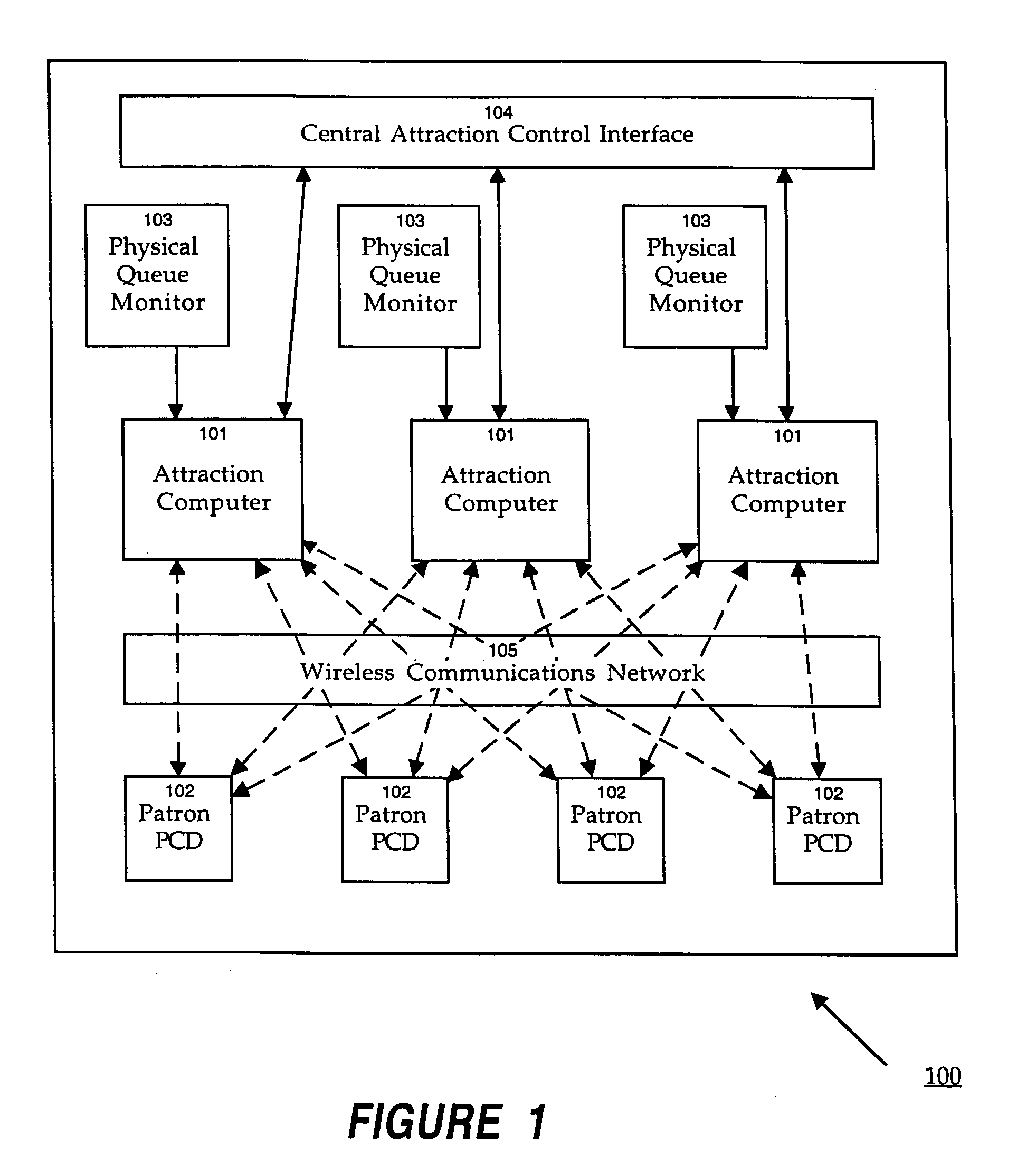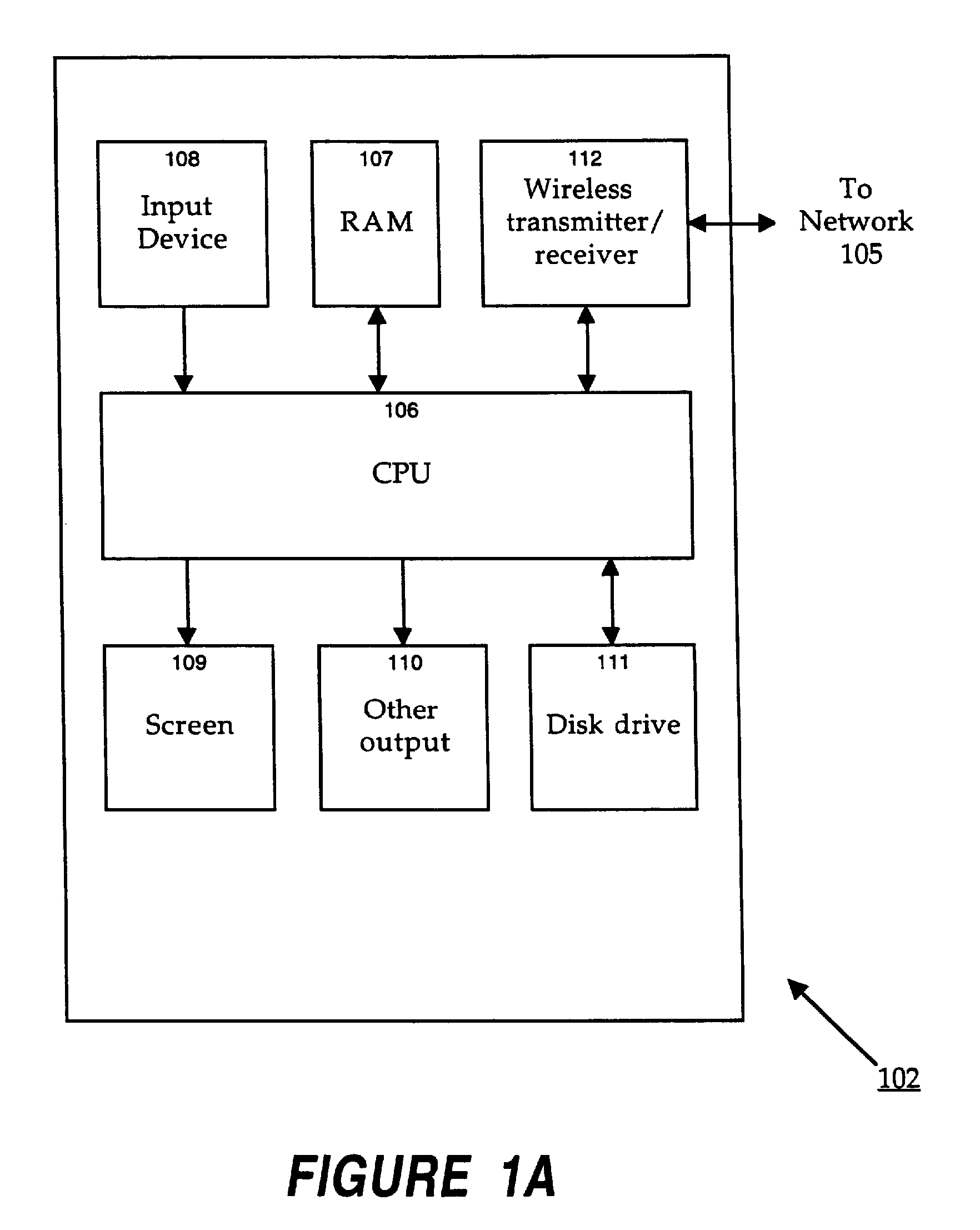Assigning and Managing Patron Reservations for Distributed Services Using Wireless Personal Communication Devices
a wireless personal communication and reservation technology, applied in the field of scheduling patron reservations, can solve the problems of inherently misallocation of patrons to attractions, large line, and loss of time merely standing in line for attractions
- Summary
- Abstract
- Description
- Claims
- Application Information
AI Technical Summary
Benefits of technology
Problems solved by technology
Method used
Image
Examples
Embodiment Construction
[0038]For illustrative purposes, the description which follows describes an embodiment of the present invention with reference to an amusement park containing a number of attractions such as rides. The present invention may also be applied to other environments involving patron reservations for distributed services, such as for example, shows, restaurants, sporting events, and the like. The terms used herein are for illustrative purposes only and should not be construed as limiting the scope of the invention as defined in the claims.
System Architecture
[0039]Referring now to FIG. 1, there is shown a block diagram of a reservation system 100 according to the present invention. A plurality of attraction computers 101 is provided, each associated with a particular attraction. In one embodiment these attraction computers are implemented as components of a single computer system or group of computer systems. Each component may be a distinct processor or processing node within the computer...
PUM
 Login to View More
Login to View More Abstract
Description
Claims
Application Information
 Login to View More
Login to View More - R&D
- Intellectual Property
- Life Sciences
- Materials
- Tech Scout
- Unparalleled Data Quality
- Higher Quality Content
- 60% Fewer Hallucinations
Browse by: Latest US Patents, China's latest patents, Technical Efficacy Thesaurus, Application Domain, Technology Topic, Popular Technical Reports.
© 2025 PatSnap. All rights reserved.Legal|Privacy policy|Modern Slavery Act Transparency Statement|Sitemap|About US| Contact US: help@patsnap.com



